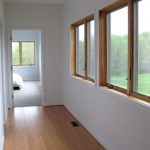Essential Aspects of Interior Home Painting
Interior home painting is a transformative endeavor that can rejuvenate your living space, enhance its aesthetics, and increase your comfort level. Whether you're a seasoned DIY enthusiast or considering hiring a professional painter, it's crucial to understand the essential aspects of this process to achieve optimal results.
1. Choosing the Right Paint
The type of paint you select will significantly impact the durability, finish, and overall appearance of your walls. Consider the following factors:
- Type of Surface: Different surfaces, such as drywall, plaster, or wood, require specific paint formulations.
- Desired Finish: Paint finishes range from flat to glossy, each creating a distinct aesthetic effect.
- Durability and Maintenance: If your walls are exposed to high traffic or moisture, opt for durable paints designed for these conditions.
2. Proper Surface Preparation
Before applying paint, it's essential to prepare your walls thoroughly to ensure optimal adhesion and a smooth finish. This includes:
- Cleaning: Remove dirt, dust, and any residue from the surfaces.
- Repairing: Patch up holes, cracks, or imperfections to create a level surface.
- Priming: Apply a coat of primer to seal the surfaces and enhance paint adhesion.
3. Painting Techniques
Proper painting techniques are vital for a professional-looking finish. Use high-quality brushes, rollers, and paint trays to achieve even coverage. Techniques include:
- Cutting In: Use a brush to carefully paint around edges, trim, and fixtures.
- Rolling: Use a roller to apply paint smoothly and evenly over large areas.
- Backrolling: After applying paint with a roller, lightly roll over it again to remove any excess and create a uniform finish.
4. Drying Time and Curing
Allow sufficient drying time for each coat of paint to ensure proper adhesion and prevent peeling or cracking. Drying times vary depending on the paint type, temperature, and humidity. Curing the paint involves allowing it to fully harden and reach its optimal strength, which may take several weeks.
5. Additional Considerations
- Ventilation: Ensure adequate ventilation during and after painting to prevent fumes from accumulating indoors.
- Color Selection: Consider factors such as natural lighting, room size, and personal preferences when choosing paint colors.
- Professional Help: If you're not confident in your painting abilities, consider hiring a professional painter to guarantee a high-quality finish.
By considering these essential aspects of interior home painting, you can achieve a stunning and durable finish that will transform your living space and enhance its beauty for years to come.

How Much Does Interior House Painting Cost In 2024 Forbes Home

3 Reasons Why Winter Is The Best Time To Have Your Home S Interior Painted

4 Benefits Of Interior Painting To Know Paint Corps
How To Choose An Interior House Painter Picone Home Painting Paperhanging
Interior Painting Tips For Your Home And House Tucson

Diy Interior Wall Painting Tips Techniques With S Family Handyman

Four Steps For Interior House Painting Decker Service Professionals

Interior Paint Ideas Turn Your Home Into A Work Of Art

Winter Best Time To Paint Your Home Sfw Painting

5 Interior House Painting Tips The Paint People








